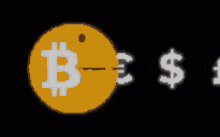Posted on February 18, 2025
Current Decentralized Cryptocurrencies
Here’s a list of cryptocurrencies that are generally considered to be decentralized based on current web information:
Bitcoin (BTC) – Often cited as the most decentralized due to its large network of nodes and the absence of a central authority controlling it. However, some centralization concerns exist regarding mining pool concentration.
Ethereum (ETH) – Known for its decentralized nature, especially with the transition to Proof of Stake (PoS) with Ethereum 2.0. However, there are concerns about centralization in terms of development and influence of key figures like Vitalik Buterin.
Litecoin (LTC) – Similar to Bitcoin in structure but with faster block generation times. It’s considered decentralized due to its broad mining community and open-source development.
Monero (XMR) – Emphasizes privacy and anonymity, which inherently supports decentralization due to its resistance to central control over transactions.
Cardano (ADA) – Aims for high decentralization through its Ouroboros proof-of-stake protocol, though some might argue about the centralization of development decisions.
Solana (SOL) – While it has high throughput, its consensus mechanism and validator network raise questions about the degree of decentralization.
Dogecoin (DOGE) – Initially a meme coin, it has grown to have a decently decentralized mining community, though less so than Bitcoin due to different mining dynamics.
DigiByte (DGB) – Known for its multiple mining algorithms intended to prevent ASIC dominance, promoting a more decentralized mining process.
Tezos (XTZ) – With on-chain governance, it allows for decentralized decision-making regarding network upgrades and changes.
Algorand (ALGO) – Uses a pure proof-of-stake system that aims for broad participation in the validation process, enhancing decentralization.
Nano (XNO) – Designed for peer-to-peer transactions without fees or mining, each user essentially operates as a node, promoting decentralization.
EOS – Despite its aim for decentralization, there have been debates about the centralization of voting power among block producers.
Polkadot (DOT) – Focuses on interoperability with a decentralized governance model, though the parachain auction system has sparked some centralization debates.
Fantom (FTM) – Uses a Directed Acyclic Graph (DAG) for consensus, which can contribute to decentralization by allowing more nodes to participate without significant performance drops.
Avalanche (AVAX) – Emphasizes scalability and low-latency transactions with a consensus protocol that aims to be decentralized.
Zano (ZANO) is generally regarded as a decentralized cryptocurrency due to several key features:
Hybrid PoW/PoS Consensus: Zano uses a hybrid of Proof of Work (PoW) and Proof of Stake (PoS), which combines the security of PoW with the more accessible participation of PoS, aiming to prevent centralization through mining power concentration.
Privacy Features: With untraceable transactions via ring signatures, stealth addresses, and the upcoming implementation of Ring Confidential Transactions (RingCT), Zano focuses on privacy which inherently supports decentralization by preventing central oversight of transactions.
Confidential Assets: The ability to create and transact with user-creatable privacy tokens on the Zano blockchain without needing to manage a separate blockchain enhances the decentralized nature by democratizing the creation of digital assets.
Staking: Zano allows staking without minimum requirements or time locks, which encourages broader participation in securing the network, thus promoting decentralization.
Governance: Zano has mechanisms like on-chain voting for network decisions, which theoretically should support decentralized governance although the actual influence can vary based on participation levels.
However, the following points should be considered:
Development Influence: Like many projects, the core team and key developers can have significant influence over the direction and upgrades of the Zano network, which might be seen as a centralizing factor.
Community Perception: There are posts on X where some users express skepticism about Zano’s decentralization, often comparing it to other privacy coins like Monero or suggesting it has elements similar to less decentralized projects due to its development approach or premine/dev-tax model.
Adoption and Node Distribution: The actual decentralization depends heavily on how widespread its node network is and how decentralized its mining/staking pool distribution is in practice.
Given this information:
Zano is designed with decentralized principles, particularly emphasizing privacy and security.
However, the effectiveness of these principles in practice can be debated based on community involvement, node distribution, and how the governance model plays out over time.
Therefore, while Zano aims for and has mechanisms to support decentralization, its real-world status might be subject to ongoing scrutiny and analysis by the crypto community. As of the latest available information, Zano appears to strive for a decentralized model, but like all cryptocurrencies, it’s a dynamic process influenced by many factors.
Monero (XMR) is often considered decentralized due to its:
Privacy Features: Utilizing ring signatures, stealth addresses, and Ring Confidential Transactions (RingCT) for anonymous transactions.
Mining Algorithm: Designed to be ASIC-resistant through multiple hard forks to prevent mining centralization by specialized hardware.
Community Governance: While there’s a core team of developers, the community can influence changes, and anyone can contribute to the code or run a node.
Decentralization of Monero involves:
Network: A global network of nodes with no single entity in control.
Development: Open-source with community contributions, although there’s debate about the influence of the core team on protocol changes.
Mining: Originally aimed at being CPU-friendly to encourage broad participation, though ASIC resistance is an ongoing challenge.
For any clarification or if you’re referring to another specific cryptocurrency, please provide more details or correct the name if it was a typo. Remember, the degree of decentralization can vary over time and depends on multiple factors including governance, node distribution, mining concentration, and community involvement.
Monero (XMR) is widely recognized as one of the leading cryptocurrencies focused on privacy and security, and it’s generally considered to be decentralized based on its structure and operational practices:
Privacy Features: Monero uses ring signatures, stealth addresses, and Ring Confidential Transactions (RingCT) to ensure transaction anonymity. This means that details like sender, receiver, and amount are obscured, promoting a decentralized, privacy-centric ecosystem where no single entity can control or monitor transactions.
Mining Algorithm: Monero employs the RandomX algorithm, designed to be resistant to ASIC (Application-Specific Integrated Circuit) mining, which encourages a more decentralized mining base by allowing CPUs and GPUs to mine effectively. This approach aims to prevent mining centralization by large pools or entities with specialized hardware.
Network Nodes: The Monero network is decentralized through a global distribution of nodes. Anyone can run a node, contributing to the network’s decentralized nature by maintaining the blockchain and verifying transactions.
Open-Source Development: Monero’s codebase is open-source, allowing anyone with the requisite skills to contribute to its development. While there is a core team, community contributions and the ability to fork the project contribute to its decentralized ethos.
Governance: Although there’s a core development team, decisions are often made through community consensus, including hard fork upgrades where the community votes with their hash power or through public discussions. This process aims to keep development decentralized to some extent.
No Premine or ICO: Monero launched without a premine, initial coin offering (ICO), or any form of developer tax, which supports the idea of a level playing field from the outset.
However, there are aspects where Monero could face challenges to its decentralization:
Mining Pool Concentration: While Monero has strived to keep mining decentralized, there can be periods where mining pool concentration increases, which might centralize control over block production temporarily.
Development Influence: The core developers have significant influence over the direction of Monero. While the community can influence decisions, there’s an ongoing debate about how decentralized this process truly is.
Community Consensus: Achieving consensus for changes can be complex, and not all decisions reflect the will of the entire community, leading to debates on true decentralization in governance.
In summary, Monero is designed with decentralized principles at its core, focusing on privacy and equitable mining opportunities. However, like any cryptocurrency, its decentralization can be subject to dynamic changes based on mining distribution, community involvement, and development decisions. As of the latest information, Monero remains one of the cryptocurrencies most committed to maintaining a decentralized, privacy-preserving network.
This list isn’t exhaustive, as new cryptocurrencies continue to emerge, and the degree of decentralization can vary over time due to changes in network governance, mining concentration, or developer influence. Also, the perception of what constitutes ‘decentralized’ can vary, so this list reflects a consensus from available public discussions and analyses:
Information from forums like Reddit and platforms like CoinMarketCap, Decrypt, CoinCodeCap, Moralis Academy, and StormGain were considered in compiling this list.
Kraken is a cryptocurrency exchange platform that allows users to buy, sell, and trade a wide variety of cryptocurrencies. Here are some key points about Kraken:
Foundation and History: Founded in 2011 by Jesse Powell, Kraken is one of the oldest and most established cryptocurrency exchanges. It officially launched in September 2013.
Services Offered:
Spot Trading: Users can trade cryptocurrencies at current market rates.
Futures Trading: Kraken offers futures contracts for some cryptocurrencies.
Margin Trading: Allows trading with borrowed funds, up to 5x leverage on certain pairs.
Staking: Before regulatory changes, Kraken offered staking services for earning rewards on certain cryptocurrencies. Post-SEC settlement, staking is not available for U.S. customers through Kraken directly but through a subsidiary for non-U.S. clients.
Crypto to Fiat: Supports trading between cryptocurrencies and various fiat currencies like USD, EUR, CAD, AUD, GBP, CHF, and JPY.
OTC (Over-The-Counter) Trading: For institutional clients or high-volume traders who need to execute large trades without affecting market prices.
Security: Known for its security measures, Kraken uses:
2-Factor Authentication (2FA)
Cold Storage for the majority of customer funds (95%)
Regular security audits and penetration testing
PGP encryption for communications
Regulation and Compliance: Kraken is registered with several regulatory bodies:
Money Services Business (MSB) with FinCEN in the US
FINTRAC in Canada
AUSTRAC in Australia
It also operates under various licenses in Europe, like VASP licenses in Ireland, Italy, and Spain.
User Base and Accessibility: Serves millions of users across approximately 190 countries. However, it has restrictions on users from specific countries due to regulatory reasons.
Legal Challenges: Kraken has faced regulatory scrutiny, including:
A lawsuit by the SEC in November 2023 for alleged violations of securities laws, which is ongoing as of the latest updates.
A settlement with the SEC in February 2023 to pay $30 million in fines and cease its staking service for U.S. users.
Mobile Apps: Kraken has two apps – the standard Kraken app for beginners and Kraken Pro for experienced traders, offering features like charting tools and advanced trading options.
Kraken Pay: A service announced to facilitate sending cash or crypto payments to any Kraken user.
Kraken’s reputation includes being a secure, user-friendly platform with a focus on regulatory compliance while offering a range of trading options for both beginners and advanced traders. However, its legal battles and the evolving nature of cryptocurrency regulation continue to shape its operations.
Here are the URLs for official websites related to Monero (XMR) and Zano (ZANO) based on the information provided:
Monero (XMR):
Official Website: www.getmonero.org
Zano (ZANO):
Official Website: intro.zano.org





 Bitcoin
Bitcoin  Ethereum
Ethereum  Tether
Tether  XRP
XRP  Wrapped SOL
Wrapped SOL  Dogecoin
Dogecoin  Bitcoin Cash
Bitcoin Cash  Monero
Monero  Zcash
Zcash  Litecoin
Litecoin  PAX Gold
PAX Gold